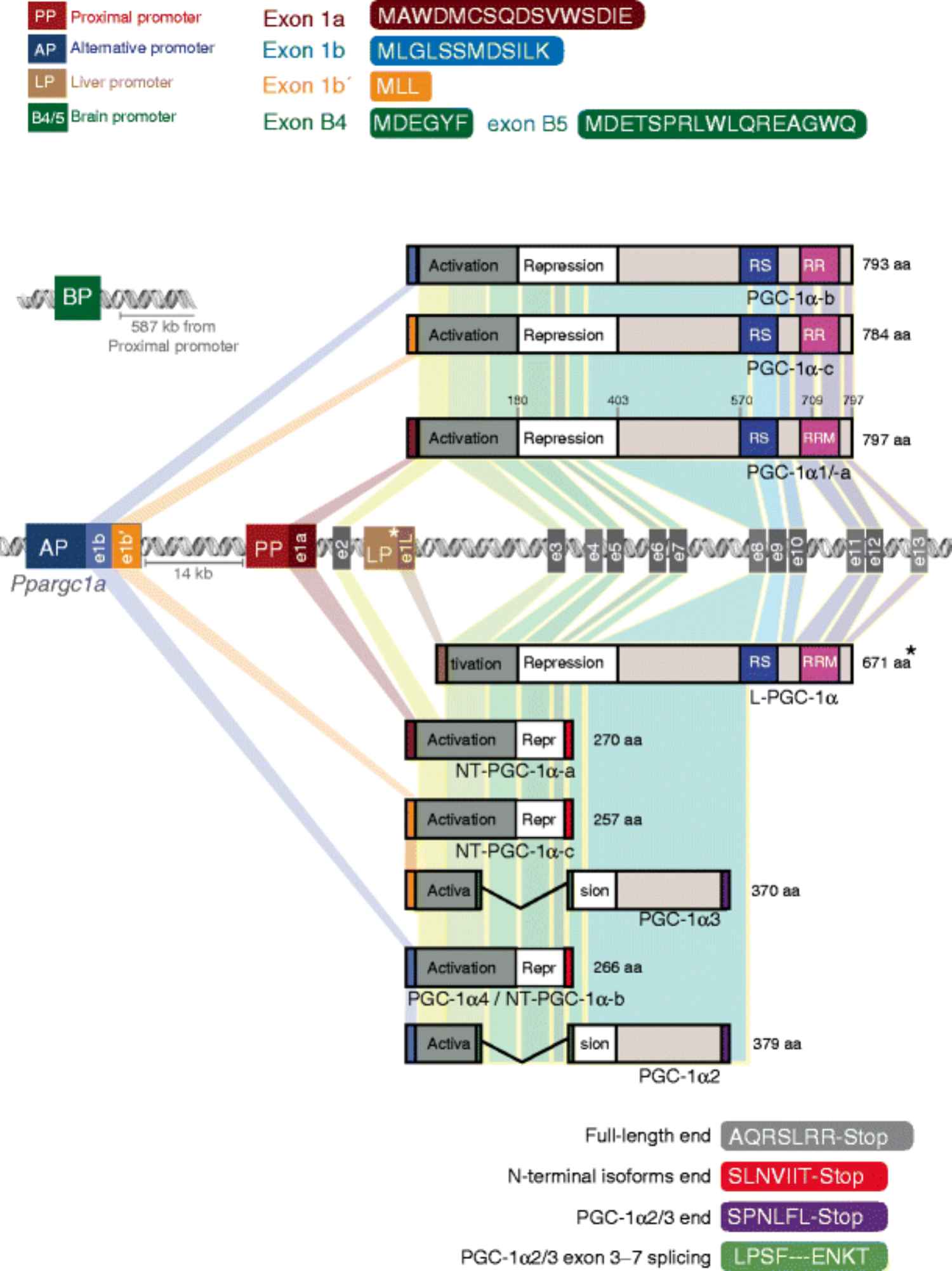How a single gene can do everything (almost).

Proteins of the peroxisome proliferator-activated receptor γ (PPARγ) coactivator 1 (PGC-1) family of transcriptional coactivators coordinate physiological adaptations in many tissues, usually in response to demands for higher nutrient and energy supply. Of the founding members of the family, PGC-1α (also known as PPARGC1A) is the most highly regulated gene, using multiple promoters and alternative splicing to produce a growing number of coactivator variants. PGC-1α promoters are selectively active in distinct tissues in response to specific stimuli. To date, more than ten novel PGC-1α isoforms have been reported to be expressed from a novel promoter (PGC-1α-b, PGC-1α-c), to undergo alternative splicing (NT-PGC-1α) or both (PGC-1α2, PGC-1α3, PGC-1α4). The resulting proteins display differential regulation and tissue distribution and, most importantly, exert specific biological functions. In this review we discuss the structural and functional characteristics of the novel PGC-1α isoforms, aiming to provide an integrative view of this constantly expanding system of transcriptional coactivators.
The hitchhiker’s guide to PGC-1α isoform structure and biological functions
Martínez-Redondo V, Pettersson AT, Ruas JL
Diabetologia. 2015 Sep;58(9):1969-77


